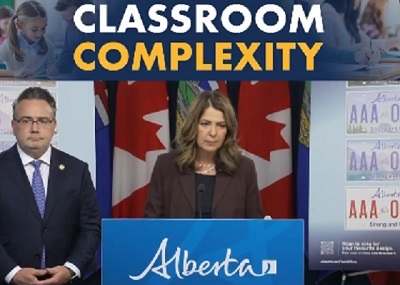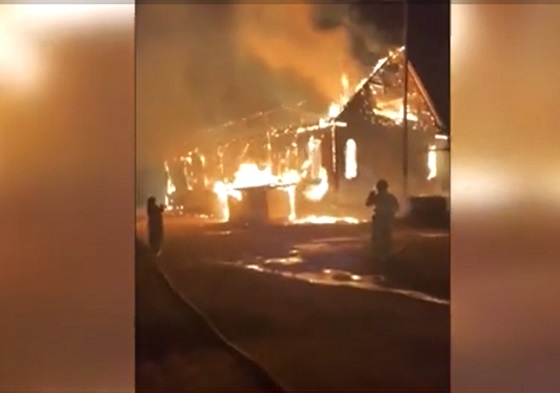Alberta
“We’re doing our best to be prepared for anything”

Little more than a month ago, members of the Alberta Colleges Athletic Conference – and the fans and parents who care about this under-valued level of college sport — were seriously focused on next week – specifically a Monday morning meeting in Medicine Hat.
For many years, interest and intensity have grown at this time of year. The month of May marks the formal start of preparation for the coming season, primarily soccer and golf and cross-country. A lot of details are needed to have everything ready when the first flag flies.
This year is bound to be different. Possible change, everywhere, is set for debate during the five-day annual general meeting.
Mark Kosak, the ACAC’s chief executive officer, made clear his belief that the major issues, time and money, must be faced head-on. Several outlines will be considered in a virtual meeting – “lots of protocols and requirements in place.” All participants have some insight to his combination of caution and aggression.
“So many complexities, so many variables,” Kosak said. “We’re doing our best to be prepared for anything.” He specified the pressure of dealing with COVID-19, of course, but also dealt with an ongoing issue in minor and amateur sports at all levels: “Everybody has financial troubles” that existed long before the pandemic arrived.
Front and centre is the need for the Augustana Vikings to complete the elimination of men’s soccer (the women’s program will survive) and to continue the community- and alumni-led bid to keep men’s hockey alive despite intense financial pressures. An interesting conundrum presented by Kosak: the backlash faced by Keyano College officials when they eliminated their Huskies hockey team a few years back and resulted in an about-face. “We have a proposal from Keyano to enter both men’s and women’s hockey; now, Keyano has agreed to wait until next year for a decision.”
“Honestly, there’s no real chance to tell what’s going to happen,” Jason Richey, head of the NAIT Ooks athlete program, said in a brief recent discussion. “As far as I can tell, the only way to avoid cutting some of our early sports is if, somehow, the distancing regulations are changed in time, but it’s too early to count on that, I think.”
Three options – all tied to the paced of reopening the economy — will be discussed in Medicine Hat. One Saskatchewan team, the Briercrest Clippers, may face regulations different from the bulk of ACAC members.
Kosak’s proposals:
* Start on schedule, Sept. 15 or thereabouts, with first-term sports such as soccer, cross-country and golf;
* Prepare for a potential Oct. 1 start, requiring less play in those three sports but maintaining full activity in the others.
* Eliminate the early events if necessary and prepare to begin remaining sports after Christmas. keeping them at the busiest possible level: futsal indoors rather than the outdoor game; maybe one full golf tournament in the fall; possibly a series of indoor track meets.
Kosak and others have been somewhat successful, in building fan interest in the ACAC, whose sports have been attended for years by mostly small crowds. Some growth in regional and national interest has shown in college-level championships, although crowds still remain far below the level of attendance for Canada’s national university playoffs.
Alberta
Alberta taxpayers should know how much their municipal governments spend

From the Fraser Institute
By Tegan Hill and Austin Thompson
Next week, voters across Alberta will go to the polls to elect their local governments. Of course, while the issues vary depending on the city, town or district, all municipal governments spend taxpayer money.
And according to a recent study, Grande Prairie County and Red Deer County were among Alberta’s highest-spending municipalities (on a per-person basis) in 2023 (the latest year of comparable data). Kara Westerlund, president of the Rural Municipalities of Alberta, said that’s no surprise—arguing that it’s expensive to serve a small number of residents spread over large areas.
That challenge is real. In rural areas, fewer people share the cost of roads, parks and emergency services. But high spending isn’t inevitable. Some rural municipalities managed to spend far less, demonstrating that local choices about what services to provide, and how to deliver them, matter.
Consider the contrast in spending levels among rural counties. In 2023, Grande Prairie County and Red Deer County spent $5,413 and $4,619 per person, respectively. Foothills County, by comparison, spent just $2,570 per person. All three counties have relatively low population densities (fewer than seven residents per square kilometre) yet their per-person spending varies widely. (In case you’re wondering, Calgary spent $3,144 and Edmonton spent $3,241.)
Some of that variation reflects differences in the cost of similar services. For example, all three counties provide fire protection but in 2023 this service cost $56.95 per person in Grande Prairie County, $38.51 in Red Deer County and $10.32 in Foothills County. Other spending differences reflect not just how much is spent, but whether a service is offered at all. For instance, in 2023 Grande Prairie County recorded $46,283 in daycare spending, while Red Deer County and Foothills County had none.
Put simply, population density alone simply doesn’t explain why some municipalities spend more than others. Much depends on the choices municipal governments make and how efficiently they deliver services.
Westerlund also dismissed comparisons showing that some counties spend more per person than nearby towns and cities, calling them “apples to oranges.” It’s true that rural municipalities and cities differ—but that doesn’t make comparisons meaningless. After all, whether apples are a good deal depends on the price of other fruit, and a savvy shopper might switch to oranges if they offer better value. In the same way, comparing municipal spending—across all types of communities—helps Albertans judge whether they get good value for their tax dollars.
Every municipality offers a different mix of services and those choices come with different price tags. Consider three nearby municipalities: in 2023, Rockyview County spent $3,419 per person, Calgary spent $3,144 and Airdrie spent $2,187. These differences reflect real trade-offs in the scope, quality and cost of local services. Albertans should decide for themselves which mix of local services best suits their needs—but they can’t do that without clear data on what those services actually cost.
A big municipal tax bill isn’t an inevitable consequence of rural living. How much gets spent in each Alberta municipality depends greatly on the choices made by the mayors, reeves and councillors Albertans will elect next week. And for Albertans to determine whether or not they get good value for their local tax dollars, they must know how much their municipality is spending.
Alberta
Premier Smith addresses the most important issue facing Alberta teachers: Classroom Complexity

Premier Danielle Smith is posting this response to a media question about Classroom Complexity.
While Albertans are hearing a lot about capping class sizes, Premier Smith says it might be a much better idea to talk about capping “complexity”.
The challenges teachers face in today’s classrooms are recognized, and work continues toward practical solutions that address their concerns.
Achieving a fair and reasonable agreement that best supports students remains a top priority. pic.twitter.com/o4UCt7sDoU
— Danielle Smith (@ABDanielleSmith) October 16, 2025
-

 Alberta2 days ago
Alberta2 days agoClick here to help choose Alberta’s new licence plate design
-

 National2 days ago
National2 days agoDemocracy Watch Renews Push for Independent Prosecutor in SNC-Lavalin Case
-

 International1 day ago
International1 day agoHamas will disarm or die
-

 International2 days ago
International2 days agoDaughter convinces healthy father to die in double assisted suicide with mother
-

 illegal immigration1 day ago
illegal immigration1 day agoLos Angeles declares a state of emergency over ICE deportations
-

 International2 days ago
International2 days agoUS Warns Hamas To Halt Executions
-

 Business1 day ago
Business1 day ago‘Taxation Without Representation’: Trump Admin Battles UN Over Global Carbon Tax
-

 Indigenous1 day ago
Indigenous1 day agoConstitutional lawyer calls for ‘false’ claims to end in Canadian residential schools burials







